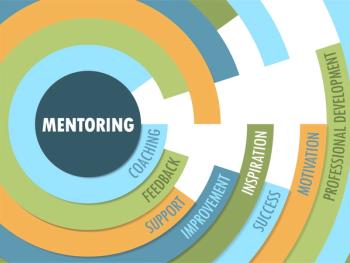
- Vol 33 No 2
- Volume 33
- Issue 2
5 Mental Health Diagnostic Challenges: Update on “To Err Is Human”
After a brief description of the scope of an important IOM report, this article summarizes content that is especially relevant for psychiatrists.
In September of 2015, the Institute of Medicine (IOM) issued an important report about diagnostic errors in health care-
Diagnostic error is defined in the IOM report as “the failure to (a) establish an accurate and timely explanation of the patient’s health problems or (b) communicate that explanation to the patient.”1 In the US, diagnostic error is the major source of paid medical malpractice claims and contributes to 10% of deaths, according to postmortem examination research. In addition to summarizing what is known about the diagnostic process and diagnostic errors, the IOM report makes numerous recommendations and emphasizes that much can be done to improve the current state of affairs.
The report is scientific and far-reaching in both scope and method. Yet it always keeps the human element front and center, including the powerful cognitive and psychological factors that have an impact on the diagnostic process. It explores the multifarious contributions to the problem of missed diagnoses. For example, diseases may be atypical in their presentation, rare, or as yet unknown. Patients and family members may be poor communicators, not understand the diagnostic process, or behave in ways that are off-putting. Doctors and other health care professionals may be busy, fatigued, stressed, lacking in certain competencies, inexperienced, or imperfect in their reasoning. System issues may range widely, including factors such as an unsatisfactory physical environment, problems with the availability of consultants, inadequate laboratory and imaging resources, burdensome technology that does not effectively support the diagnostic process, a workplace structure that undermines teamwork, a culture that discourages acknowledging and learning from mistakes, inadequate management of team responsibilities and work flow, ineffective feedback to physicians, or poor follow-up communication with patients.
While most of the topics discussed in the IOM report apply to any area of medical practice, one paragraph specifically outlines 5 diagnostic challenges that are particular to mental health. These challenges have an impact on patient care, inform research on diagnostic errors in psychiatry, and point toward areas where improvements might be made.
DSM-5. The IOM report notes that psychiatric diagnoses rely on patient reports and clinician observations, rather than on objective biological tests. While the report does not elaborate, one might reason that the current psychiatric diagnostic system contains inherent limitations that make it difficult to determine whether a diagnostic error has occurred. When discussing the important role of diagnostic testing in medicine, the IOM report notes the use of standardized questionnaires and neurocognitive testing for mental health assessment.
Distinguishing medical and psychiatric disease. Distinguishing physical from mental health diagnoses is a key challenge, given that medical disease can present with mental symptoms and mental health diagnoses can present with physical symptoms. One study that is cited in the IOM report exemplifies this concept, “
Although not cited in the IOM report, there is concern that a significant number of medical diagnoses are missed in psychiatric settings.3-5 Medical conditions may fully account for a patient’s psychiatric symptoms or may significantly contribute to the presentation; thus, the patient’s condition cannot be fully understood or expected to improve without first addressing the underlying medical disease.6
Missed psychiatric diagnoses, especially in the elderly. The IOM report expresses concern about psychiatric diagnoses being missed, especially in the elderly population. Patients who present with physical complaints that stem from an unrecognized depression are vulnerable to excessive medical testing. In addition, there is concern about over-treatment of elderly patients, who generally require lower dosages of psychotropic medications.
Psychiatric diagnosis as a default. A psychiatric disorder may be
Cognitive bias. The literature on diagnostic errors has focused considerable attention on errors of clinical reasoning, including cognitive biases that lead to inappropriate action (eg, the tendency to stick with one’s original diagnostic impression, premature closure of a diagnostic inquiry). Pat Croskerry, MD, PhD, a Professor of Emergency Medicine, has written extensively on this subject. He notes that psychiatric patients are especially vulnerable to what he calls the “
When patients have a psychiatric history, an addiction, or a presentation that appears psychiatric in nature, a clinician’s cognitive biases may lead him or her to attribute all of the patient’s complaints, including any new symptoms, to a mental disorder. Croskerry calls this “psych-out error”:
Psychiatric patients appear to be particularly vulnerable to the CDRs [cognitive dispositions to respond] . . . and to other errors in their management, some of which may exacerbate their condition. . . . In particular, comorbid medical conditions may be overlooked or minimized. A variant of psych-out error occurs when serious medical conditions (eg, hypoxia, delirium, metabolic abnormalities, CNS infections, head injury) are misdiagnosed as psychiatric conditions.6
Examples of diagnostic error
The IOM report includes numerous examples of diagnostic error, including 2 in which negative bias toward psychiatric patients played a major role. These cases are dramatic and tragic.
In the first of the cases, a young woman from an addiction center makes an emergency department (ED) visit for chest pain and anxiety. Her ED electrocardiogram is normal. The ED physician, known to have a negative bias toward “addicts,” is essentially dismissive. Later that evening, back at the addiction center, the patient has a cardiac arrest and dies. An autopsy reveals “multiple, small emboli . . . in both lungs, with bilateral massive pulmonary saddle emboli.”8
In the second case, a young, black, obese woman with schizophrenia comes to the ED with abdominal pain and vomiting. The report concludes, “. . . there were 4 handovers during the course of 28 hours in the emergency department before the correct diagnosis was made.”9 The diagnosis was a foreign body in the patient’s stomach-a “4-inch long hair clasp.”9 Croskerry and Nimmo, who originally reported this case example, attributed the delay in diagnosis to poor management planning and bias.
Conclusion
There is much to learn from this IOM report for psychiatrists who wish to improve diagnostic error rates-whether they work in outpatient or inpatient settings. In addition, the field of psychiatry has much it might contribute to the study of diagnostic errors, especially given that there are key psychological dimensions to the diagnostic process, including diagnostic reasoning, acknowledging and learning from mistakes, workplace culture, teamwork relationships, and physician-patient-family communications.
The IOM report makes a strong case for devoting more attention to this crucial issue. “Improving the diagnostic process is not only possible but also represents a moral, professional, and public health imperative.”1
Disclosures:
Dr Schildkrout is Assistant Professor of Psychiatry (PT) at Harvard Medical School, Beth Israel Deaconess Medical Center in Boston and the author of Masquerading Symptoms and Unmasking Psychological Symptoms. She reports no conflicts of interest concerning the subject matter of this article.
References:
1. Balogh EP, Miller BT, Ball JR, eds, for the Committee on Diagnostic Error in Health Care, Board on Health Care Services, Institute of Medicine. Improving Diagnosis in Health Care. Washington, DC: The National Academies Press; 2015.
2. Reeves RR, Parker JD, Burke RS, Hart RH. Inappropriate psychiatric admission of elderly patients with unrecognized delirium. South Med J. 2010; 103:111-115.
3. Yates BL, Koran LM. Epidemiology and recognition of neuropsychiatric disorders in mental health settings. In: Ovsiew F, ed. Neuropsychiatry and Mental Health Services. Washington, DC: American Psychiatric Press; 1999.
4. Schildkrout B. Masquerading Symptoms: Uncovering Physical Illnesses That Present as Psychological Problems. Hoboken, NJ: John Wiley & Sons, Inc; 2014.
5. Castro J, Billick S. Psychiatric presentations/manifestations of medical illness. Psych Quart. 2013; 84:351-362.
6. Koranyi EK. Morbidity and rate of undiagnosed physical illnesses in a psychiatric clinic population. Arch Gen Psychiatry. 1979;36:414-419.
7. Croskerry P. The importance of cognitive errors in diagnosis and strategies to minimize them. Acad Med. 2003;78:775-780.
8. Croskerry P. Perspectives on diagnostic failure and patient safety. Healthcare Quart (Toronto, Ont). 2011;15(special issue):50-56.
9. Croskerry P, Nimmo GR. Better clinical decision making and reducing diagnostic error. J Royal Coll Phys Edinburgh. 2011;41:155-162.
Articles in this issue
almost 10 years ago
Introduction: An Essential Part of the Mental Health Evaluationalmost 10 years ago
New Insights Into Narcissistic Personality Disorderalmost 10 years ago
Comorbid Clinical and Personality Disorders: The Risk of Suicidealmost 10 years ago
Does Genius Equal Madness?almost 10 years ago
A Dearth of Psychiatric Bedsalmost 10 years ago
Amy: The Frenzy of Renownalmost 10 years ago
Suicide Clusters on College Campuses: Risk, Prevention, Managementalmost 10 years ago
Positive Psychiatry: An Interview With Dilip V. Jeste, MDalmost 10 years ago
Neuropsychiatric Masquerades: Diagnosis and Treatmentalmost 10 years ago
VIP ReferralNewsletter
Receive trusted psychiatric news, expert analysis, and clinical insights — subscribe today to support your practice and your patients.

















